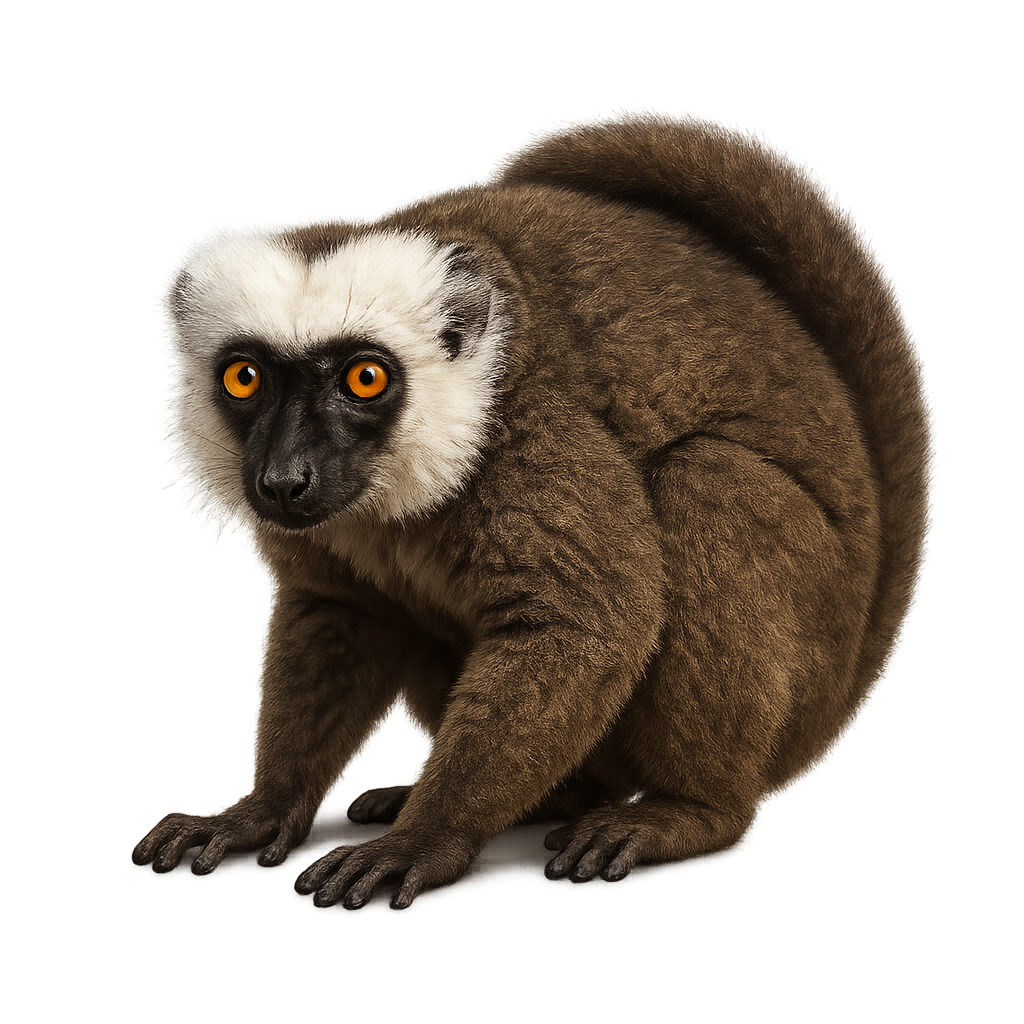Your wildlife photography guide.
Explore the white-fronted lemur in detail, study its behavior, prepare your shots.
Where to observe and photograph the white-fronted lemur in the wild
Learn where and when to spot the white-fronted lemur in the wild, how to identify the species based on distinctive features, and what natural environments it inhabits. The WildlifePhotographer app offers tailored photography tips that reflect the white-fronted lemur’s behavior, helping you capture better wildlife images. Explore the full species profile for key information including description, habitat, active periods, and approach techniques.
White-fronted lemur
Scientific name: Eulemur flavifrons

IUCN Status: Least Concern
Family: CHEIROGALEIDAE
Group: Mammals
Sensitivity to human approach: Suspicious
Minimum approach distance: 5 m
Rut period: June
Gestation: 120-128 jours
Births: October to November
Habitat:
Primary tropical rainforests, humid forests
Activity period :
Active intermittently throughout day and night.
Identification and description:
The White-fronted lemur is a species of lemur endemic to Madagascar, where it primarily lives in the humid tropical forests of the island's northwest. It is easily recognized by its gray-brown fur and the large white patch on its forehead, from which it derives its name. This lemur is primarily frugivorous, feeding on fruits, flowers, and nectar. It lives in complex social groups and exhibits strong territorial behaviors, including loud vocalizations to define its territory. Although often active during the day, it is also known to be particularly active at dusk.
Recommended lens:
300 mm – adjust based on distance, desired framing (portrait or habitat), and approach conditions.
Photography tips:
Photograph the White-fronted lemur using a telephoto lens, especially when it is in the trees or on branches. Use soft lighting to capture the details of its fur and face, particularly the white patch on its forehead. Be patient, as these lemurs are often discreet and may spend time in the canopy. A discreet approach is essential to avoid disturbing their natural behavior.
The WildlifePhotographer App is coming soon!
Be the first to explore the best nature spots, track rutting seasons, log your observations, and observe more wildlife.
Already 1 430 wildlife lovers subscribed worldwide

